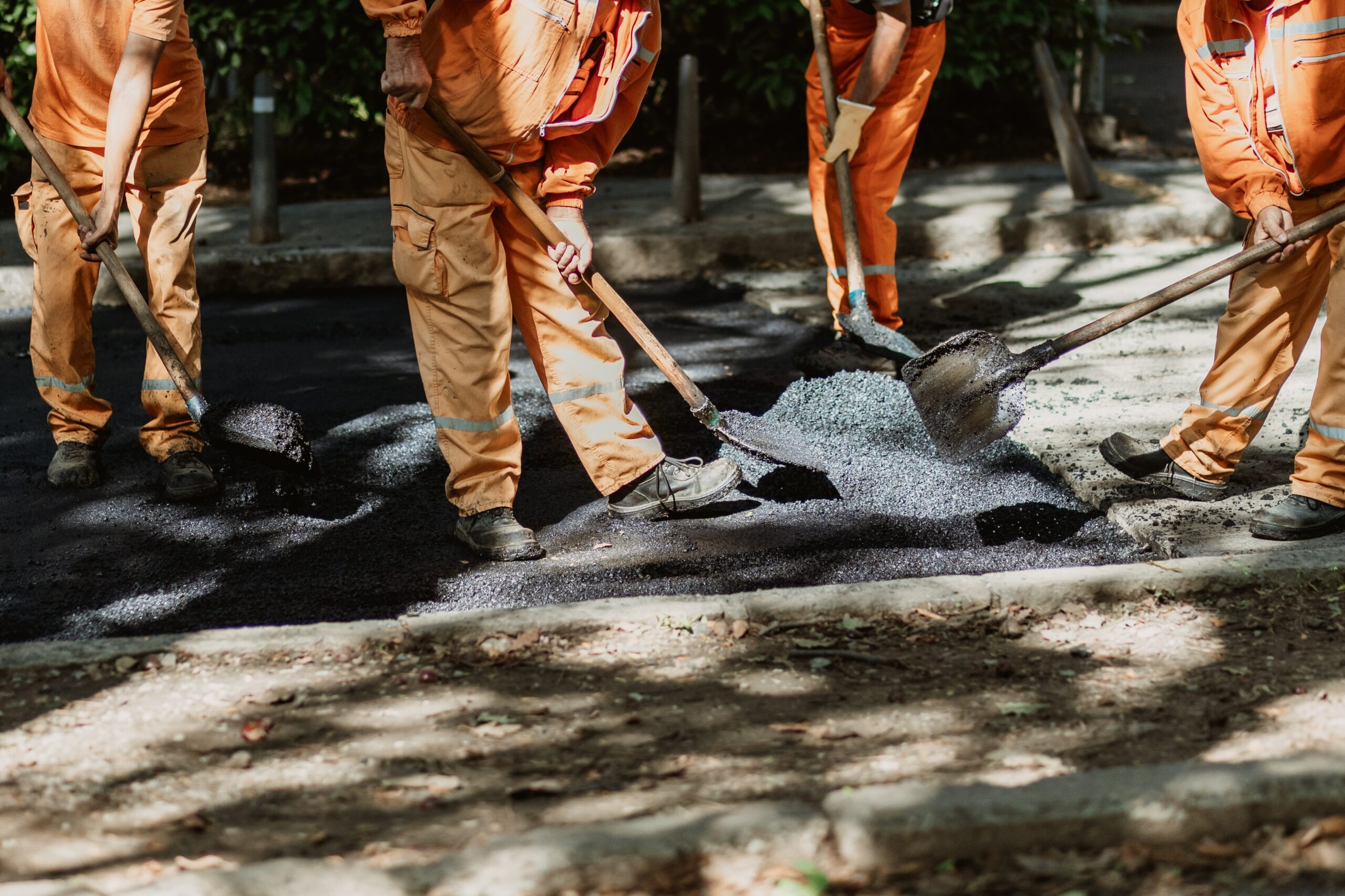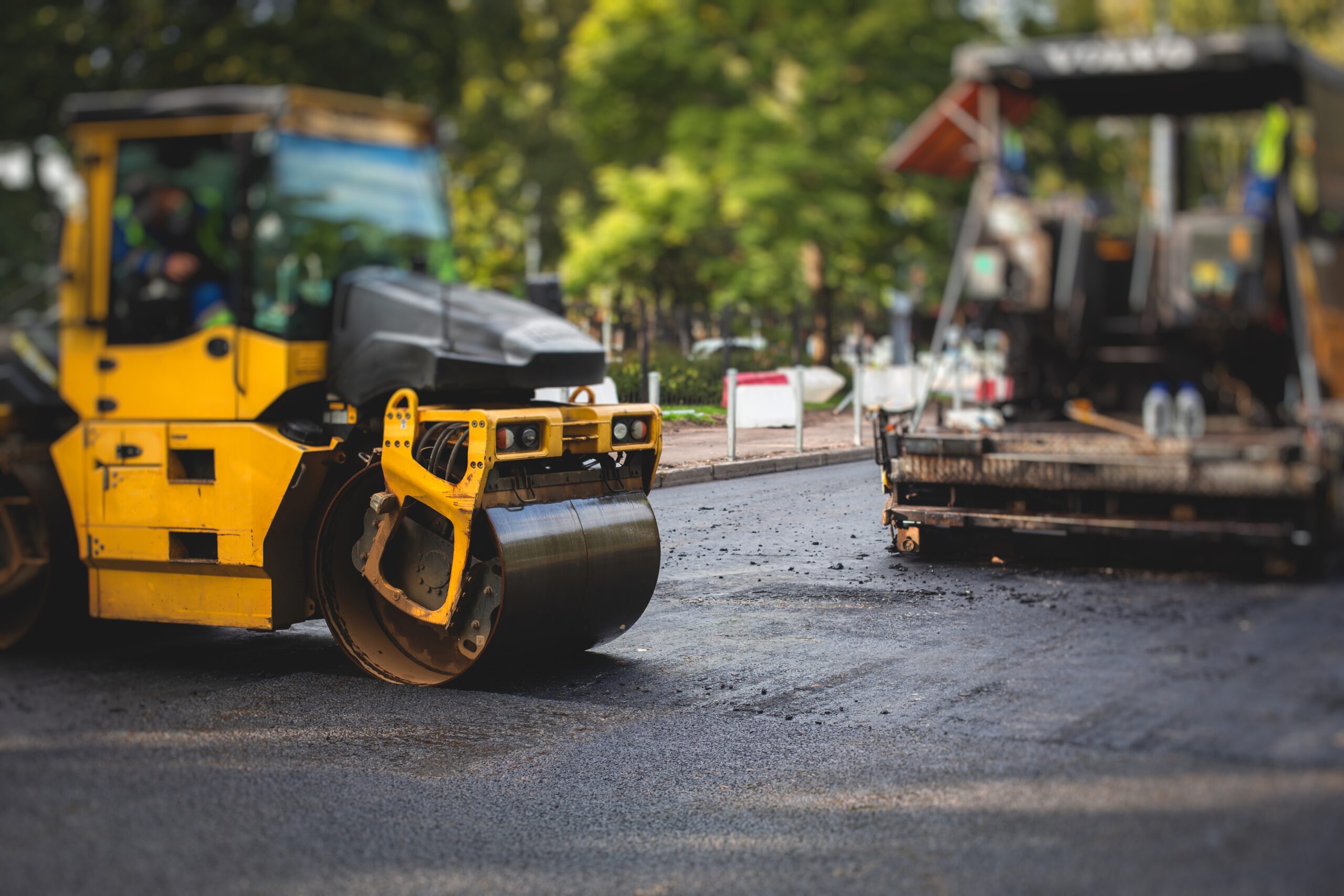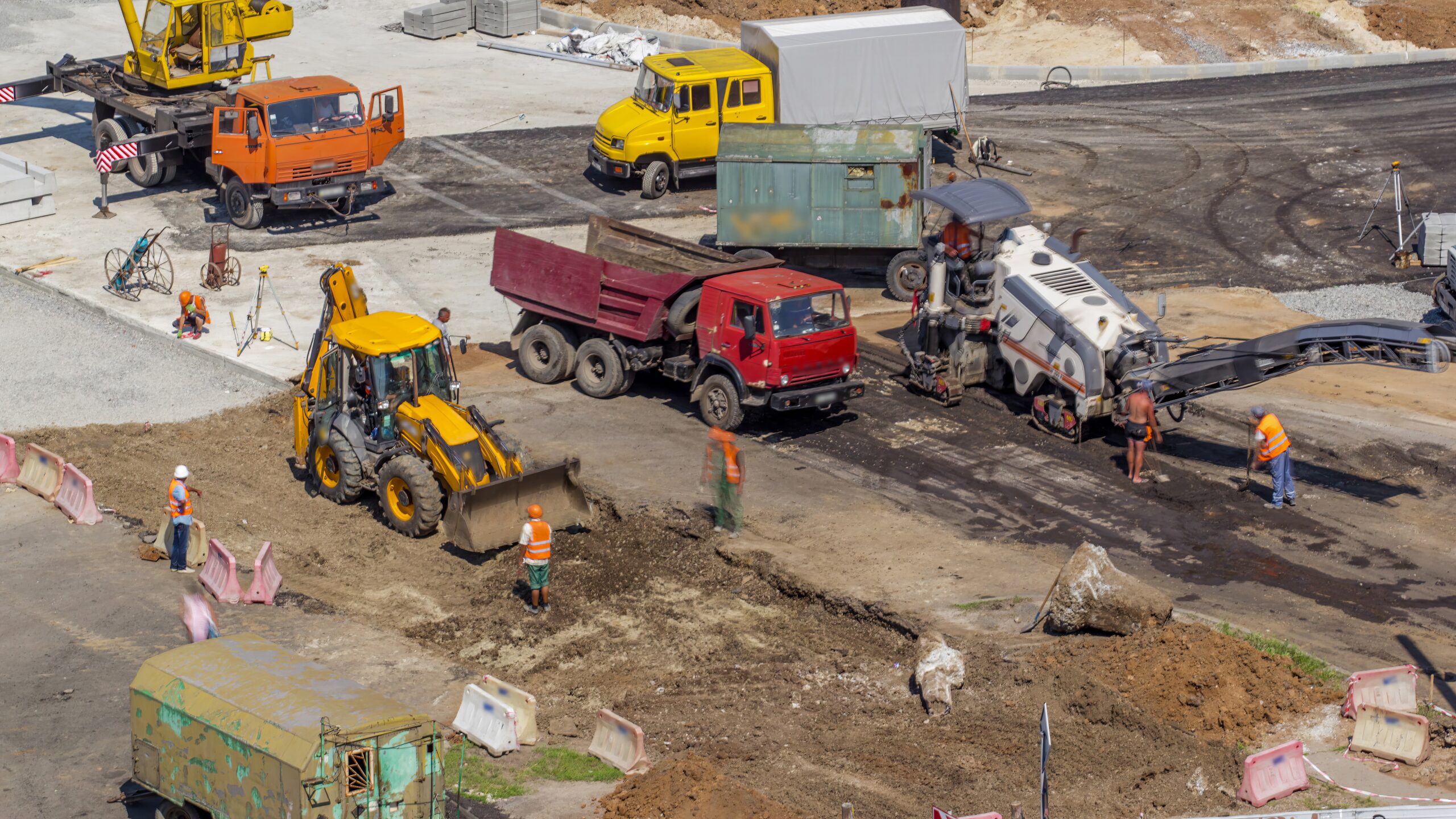
Asphalt surfaces whether driveways, parking lots, or roads are built to withstand heavy use, but they’re not immune to wear. Cracks, potholes, and fading can emerge over time due to traffic, weather, and age, prompting the need for repairs. For property owners, one question stands out: how long will an asphalt repair last?
The answer hinges on factors like the repair method, environmental conditions, and maintenance habits. This guide dives deep into the lifespan of asphalt repairs, explores repair techniques, and offers practical tips to maximize durability. Drawing from industry expertise and proven practices, we’ll equip you with the knowledge to keep your pavement safe, functional, and attractive for years to come.
Common Asphalt Repair Methods and Their Lifespans
Different repairs serve different purposes, from quick fixes to long-term solutions. The method you choose depends on the damage’s severity and your pavement’s demands. Below, we outline the most common asphalt repair techniques and their expected lifespans, based on standard industry practices.
Crack Sealing: Stopping Small Problems Early
- Lifespan: 1–5 years
- What It Is: Crack sealing fills narrow surface cracks (up to ¼ inch) with a hot, rubberized sealant to block water and debris. It’s a preventive measure to halt minor damage from worsening.
- Why It Works: By keeping moisture out, crack sealing protects the pavement’s base, delaying potholes and larger cracks. It’s affordable and quick, ideal for early intervention.
- Best For: Residential driveways, walkways, or low-traffic parking lots with minor surface cracks.
- Key Consideration: Seal cracks promptly—delays allow water to infiltrate, reducing effectiveness. Regular checks catch issues before they grow.
Pothole Patching: Fixing Deeper Damage
- Lifespan: 3–5 years
- What It Is: Pothole patching fills depressions with hot or cold asphalt mix, restoring a level surface. The process involves cleaning the hole, applying a tack coat, and compacting the fill.
- Why It Works: A well-executed patch bonds tightly, handling moderate traffic and preventing further base erosion. It’s a practical fix for isolated damage.
- Best For: Driveways, parking lots, or roads with potholes caused by water infiltration or heavy loads.
- Key Consideration: Proper compaction and edge preparation are critical. Poorly done patches can loosen under traffic, requiring rework sooner.
Sealcoating: Shielding the Surface
- Lifespan: 2–5 years
- What It Is: Sealcoating applies a protective emulsion over asphalt to guard against UV rays, water, oil, and oxidation. It enhances appearance with a dark, smooth finish.
- Why It Works: This barrier slows asphalt breakdown, preserving flexibility and reducing crack formation. It’s a cost-effective way to extend pavement life.
- Best For: Any asphalt surface, particularly those exposed to sunlight, spills, or moderate traffic, like commercial lots or residential drives.
- Key Consideration: Apply sealcoating on a clean, dry surface every 2–3 years for optimal results. Heavy traffic may require more frequent applications.
Asphalt Resurfacing (Overlay): Renewing Worn Pavement
- Lifespan: 12–20 years
- What It Is: Resurfacing adds a new asphalt layer (1–2 inches thick) over existing pavement, smoothing cracks and uneven areas. It’s a major repair for widespread surface issues.
- Why It Works: The overlay restores a uniform surface while leveraging the existing base, offering long-term durability at a lower cost than replacement.
- Best For: Parking lots, roads, or driveways with extensive cracking or fading but a stable foundation.
- Key Consideration: Ensure the base is sound before resurfacing. Weak foundations can cause new layers to fail prematurely.
Full Asphalt Replacement: Starting Fresh
- Lifespan: 20+ years
- What It Is: Full replacement removes old asphalt, repairs or rebuilds the base, and installs a new surface. It’s the most comprehensive solution for severely damaged pavement.
- Why It Works: By addressing both surface and structural issues, replacement delivers unmatched longevity, ideal for heavy use or harsh conditions.
- Best For: Parking lots, roads, or driveways with extensive cracking or fading but a stable foundation. Learn when to choose overlay vs replace.
- Key Consideration: High-quality materials and precise installation are essential for maximum lifespan. Proper base preparation prevents future issues.
Selecting the right repair balances cost, durability, and your pavement’s needs. Understanding these options empowers you to make choices that keep your property safe and appealing.
Factors Affecting Repair Longevity
A repair’s lifespan isn’t set in stone—it’s shaped by external and operational factors. By grasping these influences, you can plan repairs and maintenance to stretch your pavement’s performance. Here’s what impacts durability.
Traffic Load: Pressure Points
Traffic volume and vehicle weight dictate how quickly repairs wear. Heavy trucks or frequent traffic, common in commercial lots or industrial roads, stress asphalt more than light car traffic on a driveway.
- Impact: High-traffic areas can shorten patching or sealcoating lifespans by up to 30%. For example, a patched pothole in a warehouse lot may last 2–3 years versus 4–5 in a residential setting.In one study, increasing overloaded equivalent single axle load (ESAL) traffic threefold reduced pavement life by 64.6 %.
- Mitigation: Use thicker asphalt mixes for heavy traffic zones. Resurfacing or replacement may be better for high-stress areas than repeated patching.
Climate and Weather: Environmental Stressors
Weather is a major player in asphalt durability, with regional conditions affecting repairs differently.
- Freeze-Thaw Cycles: In colder climates, water in cracks freezes, expands, and widens damage. Crack sealing may last only 1–2 years in harsh winters.
- UV Exposure: Prolonged sunlight oxidizes asphalt, causing brittleness. Sealcoating fades faster in sunny regions, needing reapplication every 2 years.
- Rain and Drainage: Excess water undermines the base, accelerating potholes. Poor drainage can halve a repair’s life.
- Mitigation: Apply sealcoating to combat UV and water damage. Ensure proper drainage with slopes and functional storm drains to minimize moisture buildup.
Quality of Materials and Installation
The materials used and the skill of the contractor directly affect a repair’s success. High-grade asphalt, sealants, and precise application ensure lasting results.
- Impact: Subpar materials or rushed work can cut lifespans significantly—a poorly sealed crack may reopen in months, while a quality job lasts years.
- Mitigation: Choose contractors who use industry-standard materials, like hot-mix asphalt for patching or premium emulsions for sealcoating. Verify their experience with similar projects.
Base and Subgrade Stability
The foundation beneath your asphalt is critical. A weak or water-damaged base undermines even the best repairs, causing cracks or potholes to return quickly.
- Impact: Unstable bases can reduce patching or resurfacing lifespans to under a year if underlying issues aren’t addressed.
- Mitigation: Inspect the base before repairs. For serious damage, opt for base stabilization or full replacement to ensure a solid foundation.
Maintenance Practices
Regular upkeep is the backbone of long-lasting repairs. Neglecting small issues allows them to escalate, shortening pavement life.
- Impact: Skipping sealcoating or crack filling can double repair frequency, turning minor fixes into major expenses.
- Mitigation: Schedule routine inspections and maintenance, like sealing cracks annually or sealcoating every few years, to protect your investment.
By accounting for these factors, you can extend repair lifespans and avoid premature failures. Proactive planning keeps your pavement resilient and cost-effective.
Use Cases: Residential vs. Commercial, High vs. Low Traffic
Pavement needs vary by use, affecting how repairs perform. Here’s how different scenarios influence longevity and what strategies work best.
Residential Driveways: Lighter Loads, Longer Life
Driveways typically handle light traffic—family cars, bikes, or occasional deliveries. Repairs like crack sealing or patching often reach the upper end of their lifespan range (e.g., 4–5 years for patching).
- Advantage: Low stress means fewer cracks and slower wear, letting sealcoating maintain protection longer.
- Best Approach: Focus on prevention with sealcoating every 3 years and filling cracks early. This keeps driveways smooth and attractive with minimal upkeep.
Commercial Parking Lots: Heavy-Duty Demands
Parking lots for stores, offices, or warehouses face constant traffic, including heavy vehicles. Parking lots Repairs here, like pothole patching, may last 2–3 years due to wear at entrances or loading zones.
- Challenge: High-traffic areas degrade faster, requiring frequent touch-ups.
- Best Approach: Use resurfacing for widespread issues and reinforce high-stress zones with durable materials. Regular maintenance minimizes downtime and costs.
High-Traffic Areas: Relentless Wear
Roads, intersections, or commercial hubs endure intense use, shortening repair lifespans. Crack sealing might last only 1–3 years under constant heavy loads.
- Challenge: Weight and vibration accelerate cracking and rutting, especially with poor drainage.
- Best Approach: Opt for full replacement for failing surfaces. Use traffic management, like rerouting heavy vehicles, to ease pressure on repairs.
Low-Traffic Areas: Extended Durability
Private roads, overflow lots, or pathways see minimal use, allowing repairs to shine. Resurfacing can last up to 20 years with proper care in these settings.
- Advantage: Less traffic reduces mechanical stress, letting weather protection take priority.
- Best Approach: Sealcoat regularly to guard against UV and water damage. Annual inspections catch rare issues before they escalate.
Tailoring repairs to your pavement’s use ensures optimal performance and value, whether it’s a quiet driveway or a bustling lot.
Maintenance Tips for Long-Lasting Repairs
Repairs set the stage, but maintenance seals the deal. These industry-backed tips help you protect your pavement and extend its life.
Sealcoat for Protection
Sealcoating every 2–3 years creates a barrier against UV rays, water, and chemicals, preserving asphalt’s flexibility and appearance.
- Why It Works: It slows oxidation and crack formation, adding years to repairs like patching or resurfacing.
- How to Do It: Ensure the surface is clean and dry before application for a smooth, durable coat.
Maintain Clean Surfaces
Debris like leaves, dirt, or gravel traps moisture, promoting cracks and erosion. Regular sweeping or pressure washing keeps pavement healthy.
- Why It Works: Clean surfaces drain better, reducing water-related damage.
- How to Do It: Clear debris monthly and check for buildup after storms.
Optimize Drainage
Water is asphalt’s nemesis. Proper slopes, catch basins, and storm drains prevent pooling and base erosion.
- Why It Works: Effective drainage can double repair lifespans by keeping the base dry.
- How to Do It: Inspect drains regularly and clear blockages. Consider professional drainage upgrades for chronic issues.
Inspect and Act Early
Routine checks spot cracks, potholes, or fading before they worsen. Addressing small problems promptly saves money and effort.
- Why It Works: A $50 crack fill can prevent a $500 pothole repair down the line.
- How to Do It: Walk your pavement annually, especially after harsh weather, and hire professionals for thorough assessments.
Consistent maintenance transforms good repairs into great ones, ensuring your asphalt stays strong and reliable.
When to Choose Full Replacement
Repairs can extend pavement life, but some damage calls for a fresh start. Here’s how to recognize when replacement is the best path.
Signs It’s Time
- Widespread Cracking: Extensive, interconnected cracks signal structural failure. Patching won’t last, as the pavement’s integrity is compromised.
- Recurring Potholes: Persistent potholes after repairs indicate base issues. Replacement rebuilds the foundation for lasting results.
- Surface Breakdown: Raveling (crumbling gravel) or severe fading means the asphalt is too deteriorated for resurfacing to help.
- Drainage Failures: Chronic pooling or erosion suggests design flaws best fixed with a new, properly sloped surface.
Cost vs. Benefit
Repairs are cheaper short-term, but frequent fixes add up. Replacement, while pricier upfront, offers 20+ years of low-maintenance performance.
- Scenario: Annual patching at $800 over 10 years costs $8,000, while a $6,000 replacement saves money and hassle long-term.
Replacement Advantages
- Durability: A new base and surface handle heavy use and weather effortlessly.
- Functionality: Modern designs improve drainage and traffic flow.
- Aesthetics: Fresh asphalt enhances property appeal, creating a polished look.
Replacement is a strategic investment when repairs no longer suffice, delivering decades of reliability.
Frequently Asked Questions
Here are answers to common questions about asphalt repairs, based on industry insights.
1. How long does an asphalt repair last?
The lifespan of an asphalt repair depends on the method used and the condition of the existing pavement. Typically, patching lasts 3–5 years, crack sealing can last up to 10 years, while resurfacing can extend the life of your asphalt for 10–15 years. Regular maintenance can help prolong the effectiveness of any repair.
2. What’s the difference between resurfacing and full replacement?
Resurfacing involves applying a new layer of asphalt over the existing surface to restore its look and function. Full replacement, on the other hand, involves removing the old asphalt entirely and installing a new foundation and surface. Replacement is generally necessary when the damage is beyond repair or when the asphalt has reached the end of its life cycle (typically after 20 years).
3. How do I know if my asphalt needs a full replacement?
Look for signs of widespread cracking, persistent potholes, or significant surface deterioration like raveling (where the surface crumbles). If repairs no longer hold up or the damage is extensive, it’s time to consider full replacement. A professional inspection can help you determine the best course of action.
4. How much does it cost to replace asphalt?
The cost of replacing asphalt depends on factors such as the size of the area, the extent of the damage, and local labor rates. On average, asphalt replacement can range from $3 to $7 per square foot. However, opting for replacement might be more cost-effective in the long term compared to ongoing repairs.
5. Can I extend the life of my asphalt with regular maintenance?
Yes! Regular maintenance, such as seal coating, crack filling, and proper drainage, can significantly extend the life of your asphalt. Routine care helps protect the surface from damage caused by weather, traffic, and wear and tear, allowing your asphalt to last longer before needing repairs or replacement.
6. When should I schedule a maintenance check for my asphalt?
It’s a good idea to have your asphalt inspected annually to catch any early signs of damage. You should also check for cracks or fading after extreme weather conditions or after heavy traffic use. Scheduling maintenance before problems become major issues can help you save money and avoid the need for costly repairs down the road.
Pave the Way to Lasting Quality
Your asphalt is a vital asset, supporting daily activities and enhancing your property’s appeal. By choosing the right repair method whether crack sealing for minor flaws or full replacement for major damage you set the stage for durability. Combine that with smart maintenance, like regular sealcoating and drainage care, and your pavement can thrive for decades.
Understanding factors like traffic, weather, and material quality empowers you to make informed decisions, avoiding costly mistakes. Whether you manage a driveway or a commercial lot, asphalt repair signs and parking lot maintenance are your best tools for long-lasting results.
For expert guidance and top-tier asphalt solutions, trust Asphalt Coatings Company. Contact us today for a free inspection and let us help you keep your pavement in peak condition, ready for whatever lies ahead.
Contact us now to schedule your asphalt inspection and keep your pavement in top shape!



